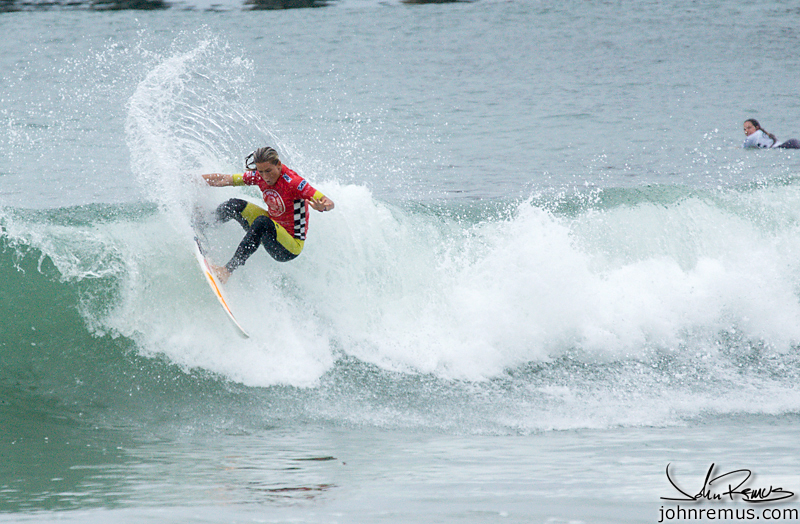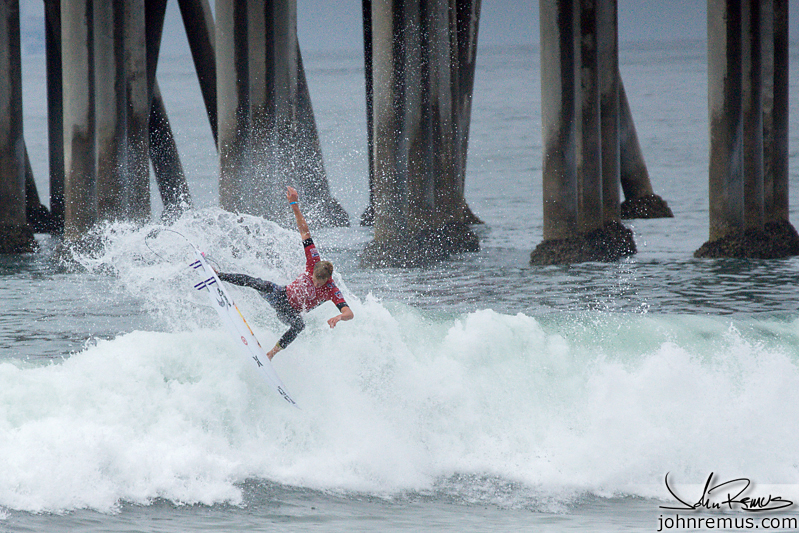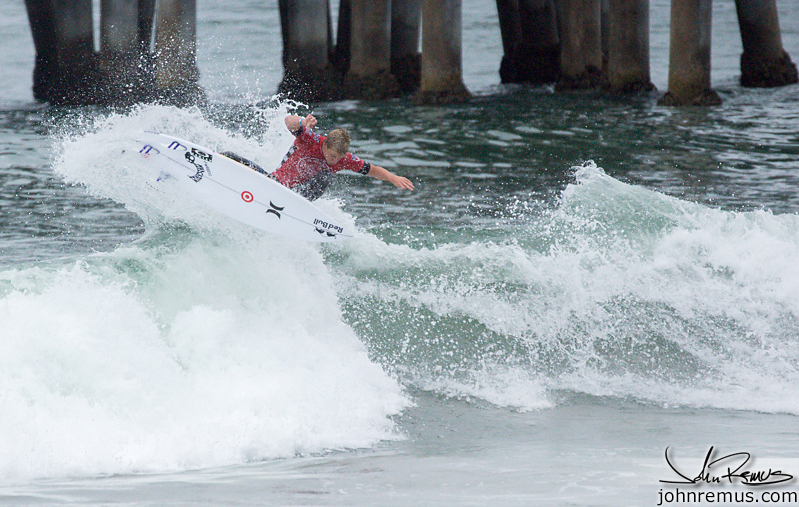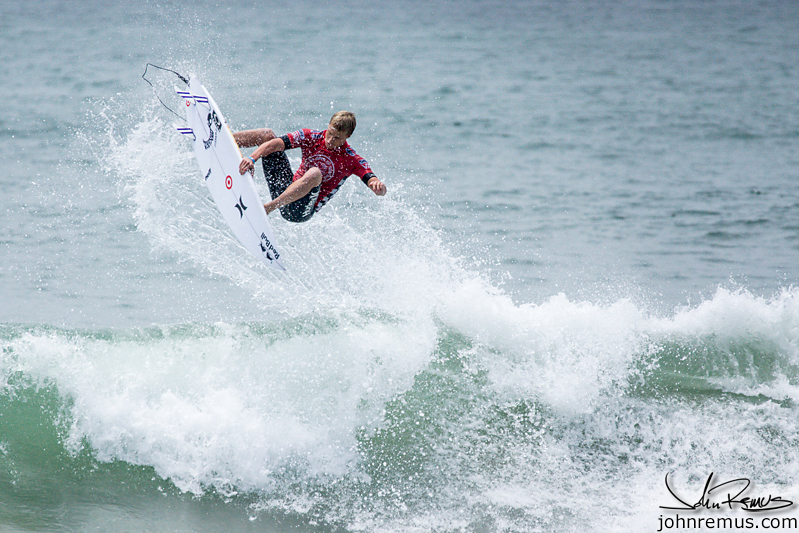Part four of my four part write-up on testing the Sony a77 DSLR in various sports setting that I typically shoot with my job. Please check out the previous post for details on the first test and a bit of an intro to this multi-part project: here
Surfing photography and the US Open.
My last test of the gear was at the US Open of Surfing in Huntington Beach. This would also be a bigger test of the longest lens I had with me to use, the 70-400 zoom. Combined with the 1.5 sensor I would have an effective 600mm of reach at the longest end.
Overall the lens and camera seemed to perform pretty well. I still wasn’t exactly in the best position to shoot the competition, but that’s my fault and the beach was ridiculously crowded for the main event.
Focus and tracking seemed to work pretty well. I was using a monopod for stabilization. And while I’m sure using a 600mm monster lens from another company would have resulted in pictures that were a bit better, I certainly can’t complain about the quality of the shots from this lens and camera combo.
I’m leaving out a lot of small details that are similar to what I wrote last week in Part 3, from the Lucas Oil Off Road Race. You can click back to that one if you’re curious.
So, what were my overall thoughts on using the a77 as a sports camera:
Focusing – I think there are several things I would change if this were to be a dedicated sports camera (which it’s not designed to be, please keep that in mind). I personally didn’t like the cross shape of the focus points. I’m accustomed to a diamond shape that allows for some point selection in the corners. But this is just related to how I like to shoot. Biggest annoyance was the seemingly slow adjustment of point selection. Also, the selected point “glows” grey. I want it to glow red. It was very difficult to see the grey selected point when looking through the viewfinder or at the LCD, especially on a bright day.
Continuous focus seemed to work really well as long as your subject was in the center of the frame. And when shooting slower moving sports the tracking focus worked well enough to be used, too. For motorsports though the subjects moved too fast or were too erratic. Again, the tracking/registered point option is likely best for people in groups (like the bride at a wedding) or with slower moving sports subjects that are high contrast against the background.
The lenses – I thoroughly enjoyed the lenses themselves. They were sharp, quiet enough to where I didn’t notice much of a difference compared to my gear and seemed to focus fast. While they turn and lock clockwise like Canon glass, they zoom opposite, like Nikon glass. This only threw me off a few times after years of muscle memory. haha!
Price-wise they’re not far off from the other major brands like Canon/Nikon for their respective focal lengths, as well.
The rear lens caps need to be redesigned somehow. There is only one way to screw them on when swapping lenses. So I feel time was wasted at several points when I was trying to do a quick change and fumbled while trying to line up the cap on the lens just-so. Picture it this way… if the face of the lens cap is a clock and there is notch at 3’oclock, you HAVE to line up the cap/lens exactly at 3’oclock or you can’t put the cap back on. Compared to a Canon cap which would lock at, say, 3 AND 9… you are more likely to re-cap quickly. Does that make sense?
The Digital Viewfinder – this was a big adjustment for me, Sony was right. I liked the internal leveler, and things like the option to show you in-the-viewfinder what the exposure will look like. But on overcast days like two of the race days I shot, when it was “bright out without being bright out” the digital viewfinder was hard to see and seemed dim looking at it compared to outside. Think of when you’ve taken a photo with your phone on a cloudy day… you know how it looks muted/dim on the screen but through your eyes it’s bright out? It’s exactly like that. (Yes, I know what 14% grey is, I’m not going super technical in explaining it here though). Do note that the viewfinder was also at the brightest setting, too.
The flip out LCD was handy – which I didn’t think I would like. But it was a nice feature to have when standing there, camera on monopod, reviewing shots.
Body Design – The design of the body was what I had the hardest time with. This has everything to do with muscle memory and personal preference. So take what I’m about to say with a very big grain of salt.
I had a hard time getting used to using the camera body. I’m not a fan of the “power button by the shutter” design. Nikon does this too… I’ve always thought it seemed silly. I always leave my cameras powered on and in sleep mode. This way they can be started quick and I never have try to shoot and think “oh, I didn’t turn it on”. But with the LCD’s of the Sony I felt the need to turn off the camera more often than I normally do. Startup seemed a tad slow for my taste, especially when I was turning off/on to conserve battery.
I didn’t like the sensor placement for auto-switching the LCD to the viewfinder, but I don’t know if that’s really a design change that is even possible.
I’ve already mentioned to Sony that there should also be an option for “no quick preview on screen” after capturing the photo. Also, I think there needs to be an option to set “preview for 2 seconds on LCD ‘ONLY’”. This way you get your quick preview looking at the back of the screen and then can go back to shooting. Currently if you use the “Preview for xx Seconds” feature it will show up in the viewfinder, too, blocking what you’re trying to shoot until it times out or until you tap the shutter button to return to shooting mode.
I’m not a fan of front adjustment wheels. This is also person preference. I find them too easy to hit/roll between shots and mess up your settings. But I understand this is something other shooters would say “well just don’t do that!”
Another design issue I had an unexpected problem with was the Video button. There is a large Video button on the back that if you hit at any time it will start recording. Great for videographers, bad for photographers. I knocked this many times and unknowingly started recording and didn’t realize it til I lifted the camera to my eye to shoot. I also did this a lot when I went to flip out the screen since the button is right above the corner of the screen most right-handed people would pull on to release the screen. Note: This CAN be turned off in the menu, I simply didn’t look long enough trying to figure out how to disable the button, however Sony clarified that it is an option.
Battery life – overall it seemed pretty great. I was just doing long days and only had one battery. However it also charged very quick.
Size of weight of the camera is nice and light, certainly a comfortable camera for all around shooting day to day.
So what was my overall impression of the camera? I enjoyed my time with it, but it’s not perfect for heavy sports shooters.
This is pretty much what I went in expecting, and from my understanding this is also what Sony was looking to learn more about by loaning me the gear to try out. There is no way that a sub-$2,000 camera will do what a $7,000 sports body will… This includes Canon and Nikon cameras in the $1-2,000 range.
Who would I recommend this for? Wedding Photographers, Portrait guys, Hobbyists, Weekend Warriors, and Amateurs alike. If you shoot “a lot of everything” and occasionally might do some sports work, it’d be a great system. There are some awesome lens options (let’s be honest, plenty of Nikon and Canon shooters pay top dollar for Zeiss glass for their cameras, too). The camera is light, feature rich with things you didn’t even know you’d need (like facial programming for your kids school performance, or that wedding you’re shooting).
I don’t think that it’s ready for the big sporting events – not for action photography just yet. But what’s cool to see is that Sony is working on it and doing the research they can to create a better system for everyone.
Click the break for photos from the US Open of Surfing

Tracking worked pretty well for Surf



I was using a monopod for these shots

All these have been cropped in as the shooting locations for everyone was pretty far away from the subjects. The beach was so packed that it wasn’t worth trying to move positions once things really got started.







